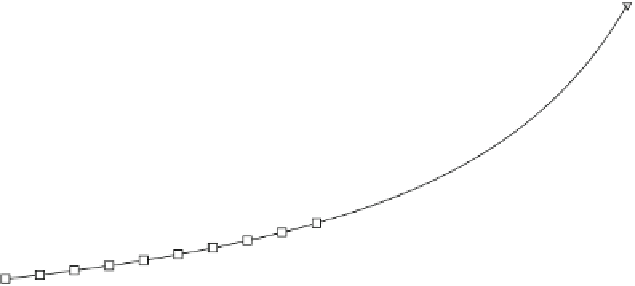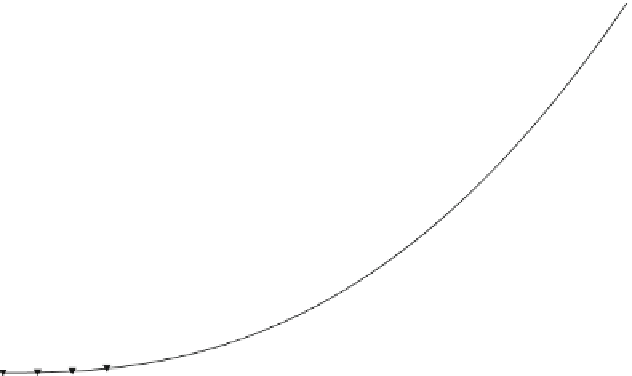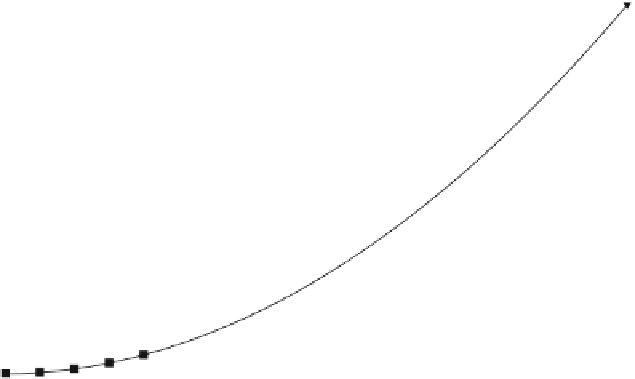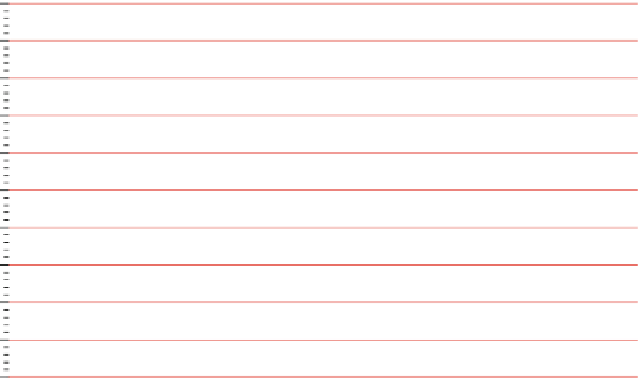Environmental Engineering Reference
In-Depth Information
1,0
Archie, m = 2
Archie, m = 2.5
Archie, m = 3
Archie, m = 3.5
I-J, n = 2
I-J, n = 2.5
I-J, n = 3
I-J, n = 4
0,9
0,8
0,7
0,6
0,5
0,4
0,3
0,2
0,1
0,0
0
0,1
0,2
0,3
0,4
0,5
0,6
0,7
0,8
0,9
1
q
Fig. 3.2 Tortuosity
, according to Archie's law for different values of
parameter
m
, and according to Iversen & Jørgensen (I-J) for parameter values of
n
t
as function of porosity
y
3.2.2 Dispersion
Another generalization of Fick's Law is necessary if advection is also present. It can be
observed that in a fluid flowing through a homogeneous porous medium the diffusivity
as proportionality gradient in Fick's Law (
3.5
) is not constant, but shows itself a strong
dependency on the flow velocity. In the scientific literature on groundwater this effect
is referred to as
dispersion
. Dispersion is thus a general phenomenon that includes
diffusion as special case. For the 1D situation one may write:
D ¼ tD
mol
þ a
L
v
(3.11)
The effective dispersivity, which is used in Fick's Law, consists of two parts.
One stems from the molecular diffusion and the other from porous media flow. For
high velocities the second part dominates, which is the common situation in
groundwater, although flow in aquifers is still rather slow compared to fluxes in
other hydrological compartments. The proportionality factor between dispersion
and velocity along a flow pathline is given by the parameter
a
L
, which has the
physical dimension of [length]. One may also use the term dispersion length or
longitudinal dispersivity
. The subscript '
L
' refers to longitudinal, as it is valid only
in the direction of the flow.
In the general two- and three-dimensional situation the concept of dispersion has
to be generalized. Transverse to the flow direction, the factor
a
L
as proportionality
factor between effective dispersivity and seepage velocity is not valid any more.


























































































































































































































